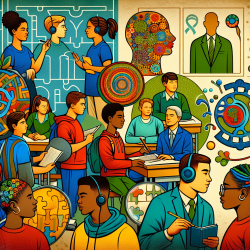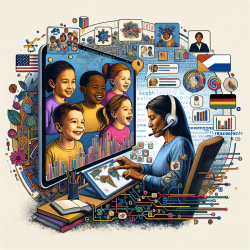Introduction
In the field of speech-language pathology, particularly when working with children, understanding the broader societal narratives can significantly impact therapeutic outcomes. Recent research, such as the study titled How the Identity of Substance Users Shapes Public Opinion on Opioid Policy, provides valuable insights into how media portrayals influence public opinion and policy support. This blog explores how these findings can be applied to enhance child therapy practices.
Research Insights
The study conducted by de Benedictis-Kessner and Hankinson (2022) highlights the role of media in shaping public opinion on opioid policies. It reveals that racial identity, as depicted in media stories, significantly influences public support for treatment-based policies. The research underscores the importance of understanding group identity and its impact on policy preferences, emphasizing the centrality of race over other identity factors like gender or residential context.
Implications for Child Therapy
While the study focuses on opioid policy, the underlying principles of media influence and group identity can be extrapolated to child therapy. Here are some ways practitioners can leverage these insights:
- Media Literacy: Educate children and their families about media literacy. Understanding how media narratives can shape perceptions and attitudes is crucial for fostering critical thinking and resilience.
- Cultural Sensitivity: Incorporate cultural sensitivity into therapy sessions. Recognize and respect the diverse backgrounds of children and how these may influence their perceptions and interactions.
- Advocacy: Use media strategically to advocate for policies that support child development and therapy. By highlighting positive stories and diverse identities, practitioners can influence public opinion and policy support.
Encouraging Further Research
The findings from this research prompt further exploration into how media narratives can be utilized to improve therapeutic outcomes for children. Practitioners are encouraged to engage in research that examines the intersection of media, public opinion, and child therapy. Potential areas of study include:
- Investigating the impact of media portrayals of disabilities on public support for inclusive education policies.
- Exploring how media narratives about childhood development influence parental attitudes towards therapy.
- Assessing the effectiveness of media campaigns in promoting early intervention and therapy services.
Conclusion
The intersection of media, public opinion, and policy is a powerful tool that can be harnessed to improve outcomes in child therapy. By understanding and applying the insights from research on media influence, practitioners can better advocate for and support the children they serve. For those interested in delving deeper into this topic, I highly recommend reading the original research paper, How the Identity of Substance Users Shapes Public Opinion on Opioid Policy.










